Erectile Dysfunction Treatments
Erectile dysfunction (ED) isn’t just a medical condition – it’s a silent thief of confidence, intimacy, and quality of life.But here’s the truth science rarely shouts: ED is treatable, reversible, and often preventable.This article busts the myths, uncovers treatments, and provides actionable strategies for regaining control – from groundbreaking medical treatments to psychological hacks and lifestyle changes.
Erectile Dysfunction Treatment article is an ultimate 10 step guide for treatment of Erectile Dysfunction and Reviving Sexual Confidence. Whether you’re battling occasional performance anxiety or chronic vascular issues, this guide isn’t about quick fixes; it’s about rewriting your sexual health story with evidence-based solutions, expert insights, and real-world success. Let’s begin the journey from frustration to freedom.
Blueprint to Overcoming Erectile Dysfunction and Reviving Sexual Confidence
Step 1: Lifestyle Changes for ED Reversal
Research shows that 30–40% of ED cases can be improved or reversed through lifestyle modifications. From shedding excess weight to quitting smoking, small changes can yield significant results. Here are some effective strategies to restore sexual health naturally.
1.1 Weight Loss & Exercise:
Obesity damages blood vessels, reduces testosterone, and increases inflammation—all contributors to ED.
Men who lost 10% of their body weight saw a 50% improvement in erectile function (Journal of Sexual Medicine, 2019).
10% weight loss = 50% symptom relief in ED
Best Exercises for ED
- Aerobic Exercise:
- Running, cycling, or swimming improves blood flow and reduces arterial stiffness.
- Frequency: 30 minutes, 5 days/week.
- Resistance Training:
- Weightlifting boosts testosterone and insulin sensitivity.
- Focus: Compound movements (squats, deadlifts).
- High-Intensity Interval Training (HIIT):
- Short bursts of intense activity improve endothelial function faster than steady-state cardio.
Table: “Exercise Comparison for ED”
| Exercise Type | Benefits for ED | Weekly Recommendation |
| Aerobic | Improves blood vessel health | 150 minutes |
| Resistance | Boosts testosterone | 2–3 sessions |
| HIIT | Enhances nitric oxide production | 20 minutes, 3x/week |
1.2 The Smoking-ED Connection
Smoking damages blood vessels, reducing penile blood flow by up to 30%.
Smokers are 85% more likely to develop ED than non-smokers (American Journal of Epidemiology).
- Improvement in 1 Month: Improved circulation and oxygen levels.
- Improvement in 1 Year: ED risk drops to near non-smoker levels.
ED Prevalence in Smokers 24% vs. Non-Smokers 12%
Vascular health comparison in smokers vs. quitters.
1.3 Stress Management
The Cortisol-Testosterone Link:
- Chronic stress raises cortisol, which suppresses testosterone production.
- Tip: Mindfulness lowers cortisol by 20–30% in stressed individuals.
Effective Techniques:
- Mindfulness Meditation Exercises: 10 minutes daily to reduce performance anxiety.
- Yoga: Combines relaxation with pelvic floor engagement (try Malasana pose).
- Sleep Hygiene: Aim for 7–8 hours; poor sleep lowers testosterone by 15%.
Importance of Yoga in Sexual Health
1.4 Pelvic Floor Exercises
Weak pelvic muscles reduce blood flow and erection rigidity
How to Do Kegels:
- Identify the right muscles (stop urination midstream).
- Squeeze for 5 seconds, relax for 5 seconds.
- Repeat 10–15 times, 3x/day.
Male Pelvic Floor Exercises
Table: “4-Week Kegel Routine”
| Week | Sets/Day | Hold Time | Rest Time |
| 1 | 3 | 3 seconds | 3 seconds |
| 2 | 4 | 4 seconds | 4 seconds |
| 3 | 5 | 5 seconds | 5 seconds |
| 4 | 6 | 6 seconds | 6 seconds |
Lifestyle changes like weight loss, quitting smoking, and pelvic exercises aren’t quick fixes—they’re long-term solutions.
Step 2: Psychological Therapies for Erectile Dysfunction
Erectile dysfunction (ED) isn’t always a physical issue—40% of cases stem from psychological factors like anxiety, stress, or relationship conflicts. Addressing these mental barriers is often the key to restoring confidence and sexual health. In this guide, we explore evidence-based psychological therapies that break the cycle of ED and reignite intimacy.
2.1 The Psychological Causes of ED
Performance Anxiety
90% of men with ED report anxiety about sexual performance.
- The Vicious Cycle: Fear of sexual failure → Stress → Reduced arousal → ED → Reinforced anxiety.
Depression & ED
- Bidirectional Link: Low serotonin levels reduce libido, while ED worsens depressive symptoms.
Relationship Stress & ED
- Triggers: Poor communication, unresolved conflicts, or infidelity.
Table: “Common Psychological Triggers of ED”
| Trigger | Impact on ED | Solution |
| Performance Anxiety | Overthinking inhibits arousal | CBT, Mindfulness |
| Depression | Lowers libido and energy | Therapy, Medication |
| Relationship Issues | Emotional distance reduces intimacy | Couples Counseling |
2.2 Cognitive Behavioral Therapy (CBT)
Identify and re-frame negative thought patterns. Cognitive Restructuring Replaces irrational beliefs with balanced thoughts and Exposure Therapy Gradually desensitization to sexual situations.
Identify triggers → Challenge thoughts → Behavioral exercises
75% of men with psychogenic ED saw improvement after 12 CBT sessions
2.3 Sex Therapy & Couples Counseling
Sex Therapy focuses on Non-sexual touching exercises to rebuild intimacy without performance pressure and intercourse whereas Couple Counseling focuses on to Improve communication, address resentment, and set shared goals.Couples who attend therapy together report 60% higher ED recovery rates
Sensate Focus Exercises
“Sex isn’t just about erections—it’s about connection.”
2.4 Mindfulness Meditation & Stress Reduction
- Benefits: Reduces cortisol, enhances present-moment awareness during sex.
- Practice: 10-minute daily sessions focusing on breath or body sensations.
- Steps: Tense and release muscle groups to alleviate physical stress.
5-Minute Mindfulness Routine for ED (Breathing, body scan, grounding techniques).
2.5 When to Seek Professional Help
- ED persists despite physical treatments.
- Anxiety/depression disrupts daily life.
- Look for WAS-certified sex therapists.
avoidance of intimacy, constant worry
Psychological therapies empower men to reclaim control over their sexual health by addressing the mind-body connection.
Step 3: Natural Remedies & Supplements
While prescription medications dominate ED treatment, natural remedies and lifestyle changes offer complementary solutions. This guide explores evidence-backed herbs, vitamins, and diets that may enhance erectile function, with insights into their effectiveness and safety.
3.1 Food Supplements
L-Arginine: This amino acid converts to nitric oxide, critical for vasodilation.
Yohimbe: Derived from African tree bark, yohimbe can cause rapid heart rate and anxiety. May severe side effects Consult a doctor before use.
Grams and Fenugreek seeds: increases testisteron level, improves blood supply
Cinnamon:
3.2 Vitamins & Minerals: Essential Nutrients for Erectile Health
Zinc: Supports testosterone synthesis. Deficiency correlates with ED.
Vitamin D: Low levels impair vascular function. Men with Vitamin D deficiency have 32% higher ED risk
Magnesium: Relaxes blood vessels; improves endothelial function.
3.3 Mediterranean & Keto Diets
Mediterranean Diet: This diet lower ED risk to 40% due to improved cardiovascular health. Key components of this diet are Olive oil, fish, nuts, and leafy greens
Keto Diet: Reduces inflammation and insulin resistance, both ED contributors. But High saturated fats may harm long-term heart health.
3.4 Nitric Oxide Boosters
Beetroot Juice: High in nitrates, which convert to nitric oxide. 250 ml daily for 6 weeks showed 20% improvement in ED severity.
L-Citrulline: More effective than L-arginine at raising nitric oxide levels. uses 6–8 grams daily.
Natural remedies like ginseng, zinc, and Mediterranean diets can support erectile health but work best alongside medical treatments. Always consult a healthcare provider before starting supplements, especially if taking medications.
Step 4: Medications & Prescription Treatments
Medications remain the cornerstone of ED treatment, with options ranging from oral pills to hormone therapies.
4.1 PDE5 Inhibitors: Viagra, Cialis, and Levitra
PDE5 inhibitors enhance nitric oxide’s effect, relaxing penile smooth muscles to improve blood flow. They require sexual stimulation to trigger an erection
Key Differences:
| Medication | Onset | Duration | Dose | Cost (Monthly) |
| Viagra (Sildenafil) | 30–60 mins | 4–6 hours | 25–100 mg | 70–300 |
| Cialis (Tadalafil) | 30–45 mins | 24–36 hours | 2.5–20 mg | 80–350 |
| Levitra (Vardenafil) | 25–60 mins | 4–6 hours | 5–20 mg | 75–325 |
Common Side Effects:
- Headaches, flushing, nasal congestion.
- Rare: Priapism (seek immediate help for erections >4 hours).
4.2 Testosterone Replacement Therapy (TRT)
Low testosterone (hypogonadism) contributes to 10–20% of ED cases. Symptoms include fatigue, low libido, and mood swings.
- Gels (Androgel): Applied daily to shoulders/arms.
- Injections: Testosterone cypionate (weekly/biweekly).
- Patches: Transdermal delivery, changed daily.
Studies show TRT improves erections in 50–60% of men with low testosterone.
Risks:
- Increased red blood cell count.
- Potential prostate enlargement.
4.3 Penile Injections: Trimix and Alprostadil
Trimix (alprostadil + papaverine + phentolamine) or Alprostadil alone is injected into the penis’s side, bypassing systemic effects for targeted action.
- 80–90% success rate, even in severe ED cases.
- Erections last 30–60 minutes.
From fast-acting pills to long-term hormone therapy, ED medications cater to diverse needs. Always consult a healthcare provider to tailor treatments to your health profile
Step 5: Managing Underlying Health Conditions
Erectile dysfunction (ED) is often a symptom of broader health issues. Chronic conditions like diabetes, heart disease, and hormonal imbalances can impair vascular health, nerve function, and hormone levels, directly contributing to ED. Addressing these underlying issues not only improves overall health but can also restore sexual function. This guide explores how to manage ED by targeting its root causes.
6.1 Diabetes and ED: High blood sugar damages blood vessels and nerves, reducing blood flow and sensation. Men with diabetes are 3x more likely to develop ED
6.2 Cardiovascular Disease and ED: Atherosclerosis restricts blood flow to the penis. ED often precedes heart disease by 3–5 years.
6.3 Hormonal Imbalances: Testosterone are Critical for libido and erectile function. Thyroid Hormones Both hypo- and hyperthyroidism can disrupt sexual health.
6.4 Obesity and Metabolic Syndrome: Excess fat increases estrogen and inflammation, impairing vascular health.
6.5 Hypertension and ED: damages arteries, while some medications (e.g., beta-blockers) worsen ED.
6.6 Other Conditions: Kidney Disease, Neurological Disorders
Managing chronic health conditions is pivotal in treating ED. Collaborate with healthcare providers to tailor strategies that address both your overall health and sexual well-being.
Step 6: Ayuveda and Herbal Treatments for Erectile Dysfunction
6.1 Bhasmas for Treatment of ED
Bhasmas, integral to Ayurveda, are calcined mineral or metal preparations used traditionally to treat various ailments, including erectile dysfunction (ED).
Swarna Bhasma (Gold Ash): Believed to rejuvenate tissues, boost vitality, and enhance sexual health by balancing hormones (e.g., testosterone). Often combined with herbs like Ashwagandha or Shilajit for synergistic effects.
Rajata Bhasma (Silver Ash): Used to improve physical strength and stamina, indirectly supporting sexual function.
Vanga Bhasma (Tin Ash): Traditionally used to address urinary and reproductive disorders, potentially aiding ED.
Yashada Bhasma (Zinc Ash): Supports testosterone production and sperm health, critical for erectile function.
Bhasmas may offer a traditional approach to ED by targeting vitality and hormonal balance. However, their use requires caution, expert guidance, and integration with lifestyle changes.
6.2 Mercury-Based Preparations for ED
Mercury-based formulations (known as Parad or Rasa Shastra preparations) are a controversial yet historically significant part of Ayurvedic medicine, including treatments for erectile dysfunction (ED).
Rasasindoor (Mercury Sulfide): Act as a Rasayana (rejuvenator), enhancing vitality, libido, and erectile function by improving energy flow (Ojas) and hormonal balance.
Makaradhwaja: Traditionally used to boost stamina, sexual vigor, and treat ED by balancing Vata (nervous system) and Kapha (energy metabolism).
Paradi Bhasma: Purified mercury ash used to address chronic debility, low testosterone, and reproductive issues.
6.3 Herbs used for Treatment of ED
Herbal remedies have been used for centuries in traditional medicine systems like Ayurveda to address erectile dysfunction (ED). These herbs often target underlying causes such as poor blood flow, hormonal imbalances, stress, or fatigue.
Ashwagandha (Withania somnifera): Reduces stress (lowers cortisol), boosts testosterone, and improves stamina.
Tribulus Terrestris (Gokshura): Increases testosterone, improves nitric oxide production (enhances blood flow to penile tissues).
Panax Ginseng (Korean Red Ginseng) Acts as an adaptogen, improves endothelial function, and boosts nitric oxide. 60% of men experienced improved erections with 1,000–2,000 mg daily
Safed Musli (Chlorophytum borivilianum): Acts as an aphrodisiac, boosts testosterone, and improves stamina.
Akarkara (Anacyclus pyrethrum): Contains alkaloids that may stimulate testosterone production.
Konch Beej: it’s a key Ayurvedic herb for ED, low libido, and infertility, Contains L-DOPA, a precursor to dopamine, which enhances mood, motivation, and sexual desire.
Overall 160 different herbs are used for treatment
Step 7: Advanced Medical Treatments for Erectile Dysfunction
When medications, lifestyle changes, and therapy aren’t enough, advanced medical treatments offer hope for men with persistent erectile dysfunction (ED). From non-invasive shockwave therapy to surgical implants, these solutions address physical causes like vascular damage or nerve injury.
7.1 Low-Intensity Shockwave Therapy
Uses acoustic waves to stimulate angiogenesis (new blood vessel growth) in penile tissue. 6–12 sessions over 6 weeks; pain-free and non-invasive.
60–70% of men report improved erections lasting 1–2 years
7.2 Penile Implants: Surgical Solutions
- Inflatable Implants: Fluid-filled cylinders mimic natural erections via a scrotal pump. Most natural feel; 95% patient satisfaction cost about 15,000–25,000
- Malleable Implants: Semi-rigid rods bend into position, Simpler surgery, Permanent semi-rigidity, lower cost
7.3 Vascular Surgery: Restoring Blood Flow
Venous Leak Surgery: Seal leaking veins that drain blood from the penis. Success Rate 30–40% long-term improvement (considered a last resort).
Penile Revascularization: Bypass blocked arteries using grafts from the leg or abdomen. Suitable for Young men with trauma-induced ED and no underlying disease.
Advanced treatments like shockwave therapy and penile implants provide life-changing solutions for men with severe or treatment-resistant ED. While surgical options require careful consideration, their high success rates make them invaluable for restoring sexual health.
Step 8: Emerging Treatments and Future Directions in Erectile Dysfunction Care
7.1 Stem Cell Therapy: Regenerating Damaged Tissue
Stem cells (harvested from fat or bone marrow) are injected into the penis to repair blood vessels, nerves, and smooth muscle. Early trials show 50% improvement, but more research is needed.
7.2 Gene Therapy & CRISPR: Early-phase trials using viral vectors to deliver VEGF show promise.
7.3 Platelet-Rich Plasma (PRP) Therapy: Injections of concentrated platelets release growth factors to stimulate tissue repair.
7.4 Nanotechnology:Microscopic robots deliver drugs directly to penile tissue, minimizing systemic side effects.
7.5 Wearable Tech & Neural Interfaces: Wearable electrodes stimulate pelvic nerves
Step 9: Erectile Dysfunction in Special Populations
Erectile dysfunction (ED) does not discriminate by age, gender identity, or health history. However, certain groups—like young men, seniors, cancer survivors, and transgender individuals—face unique challenges that demand tailored approaches. This guide explores how ED manifests and is managed in these special populations, offering targeted strategies for effective care.
9.1 ED in Young Men (<40 Years): Performance anxiety, porn addiction (“PIED”), depression, chronic stress, or poor sleep
9.2 ED in Older Adults (>60 Years): 50% of men over 60 experience ED, but only 25% seek help
9.3 Post-Prostate Surgery ED: 50–70% regain function if nerves are preserved
9.4 ED in Spinal Cord Injury Patients: High testosterone doses can suppress natural erectile function.
9.5 Cultural & Ethnic Considerations: Asian and Middle Eastern men are 30% less likely to seek help
ED management must be as diverse as the populations it affects. Whether addressing hormonal shifts in transgender men or post-surgery rehab in cancer survivors, personalized care is key.
Step 10: Finding Help
10.1 Choosing a Specialist
How to choose the best ED doctor?” “What questions to ask a urologist?”
Look for board certification in urology or sexual medicine.
Platforms like Healthgrades or Zocdoc highlight patient experiences.
| Specialist | Focus | When to See |
| Urologist | Physical causes (vascular, nerve) | Persistent ED, post-surgery cases |
| Sex Therapist | Psychological/relationship issues | Anxiety, intimacy struggles |
| Endocrinologist | Hormonal imbalances (low T) | Fatigue, low libido, ED |
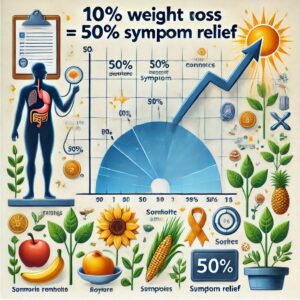
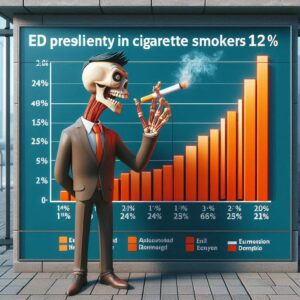
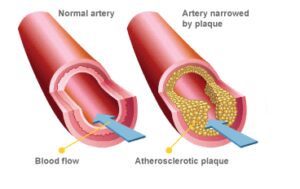
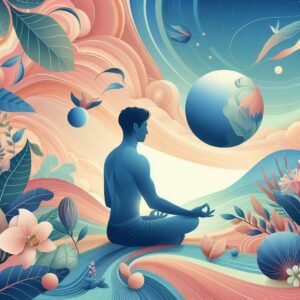
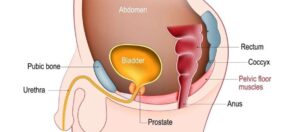
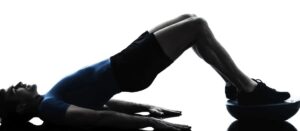

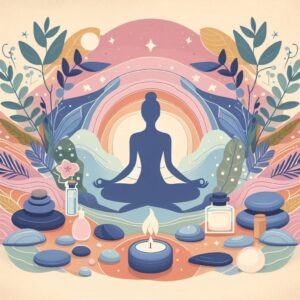

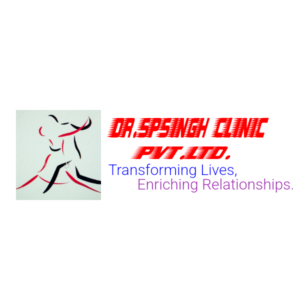 Dr. SP Singh Clinic[/caption]
Dr. SP Singh Clinic[/caption]